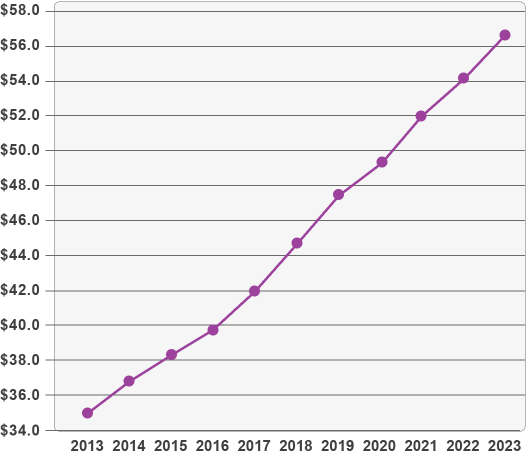Veterinary Care Spending
Veterinary Care Spending
While consumer spending on veterinary care has continued to increase over the years, it experienced slower growth in 2011 and 2012. This is the time right after the economic recession when pet owners were still feeling the effects of the downturn. Pet owners may have tried to save money in a number of ways, for instance, by:
- Skipping or delaying veterinary visits
- Searching for free medical information and advice online
- Purchasing less expensive pet medications through online sources
Veterinary Expenditures in the U.S.,
2013-2023 ($ Billions)

Fortunately, this trend in slow growth has changed and veterinary expenditures in the U.S. grew by an average of 4.9% from 2013 to 2018. In 2019, veterinary expenditures are estimated to jump by 6.3%. In addition, it was estimated that, thru 2023, yearly growth was expected to continue at an estimated rate of 4.9% per year.* However, it will remain to be seen if there is a long term impact to direct veterinary related expenses based on the coronavirus pandemic and increasing unemployment rates. As in the recession of 2008 to 2012, some pet owners may get into some hard habits to break, such as cutting back on veterinary visits, perceiving veterinary costs as expensive, and thinking about wellness care as non-essential. However, as we’ve seen with past recessions, when economic conditions improve in months and years ahead, because consumers desire to keep their pets healthy it is likely to lead to a continued increase in veterinary spending.
*Sundale Research, 2019, State of the Industry: Veterinary Care in the US



